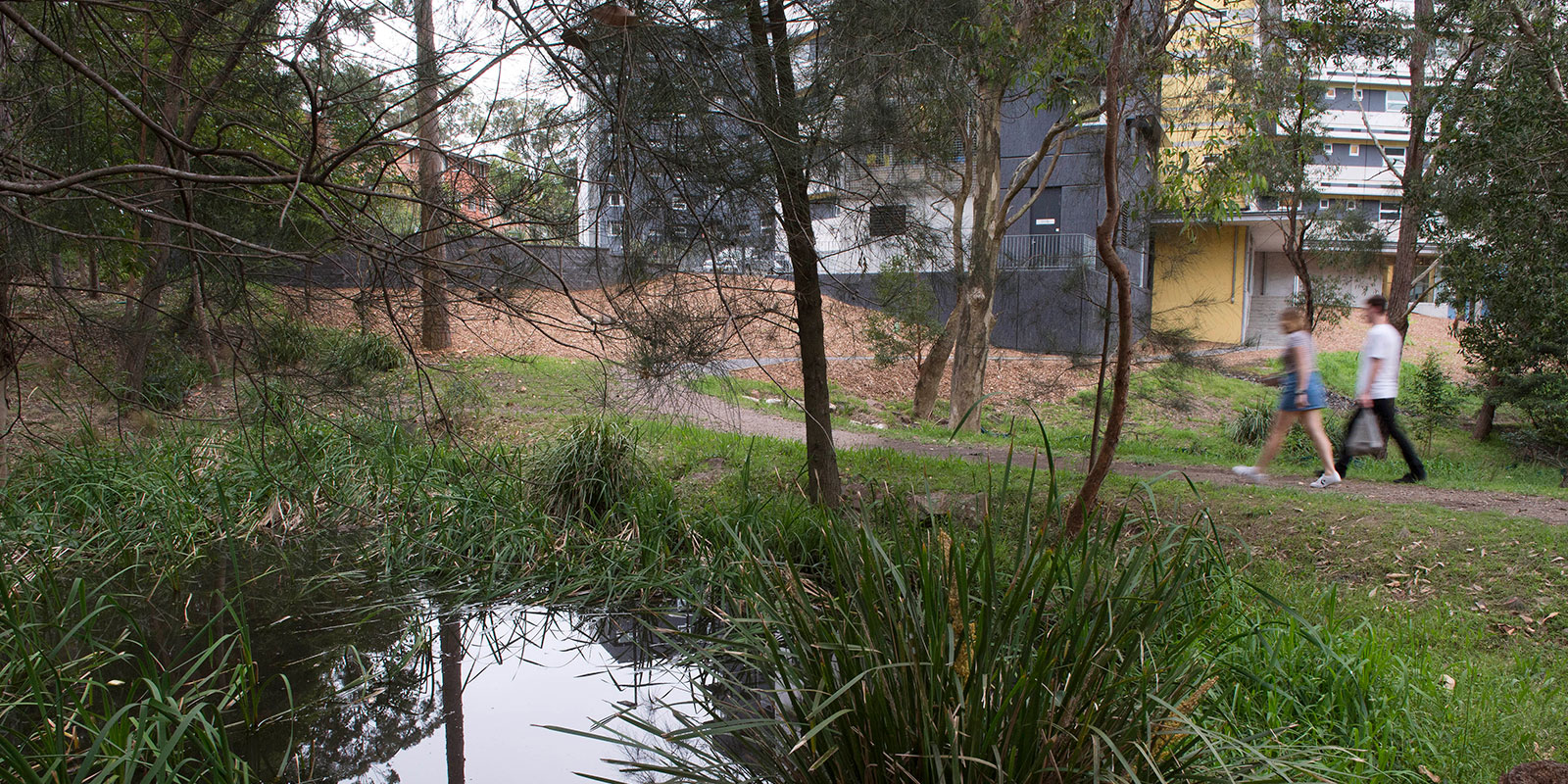

Goal 15:
Life on Land
Water Discharge Guidelines and Standards
The University of Newcastle has formal guidelines in place to regulate water discharges and protect environmental and public health.
Specifically:
- The Hydraulic Services Guiding Document (v2.0 - effective since November 2024), in Section 5.7 (pages 40-46), lays out minimum requirements for stormwater and sub‑soil drainage and discharge.
- It mandates that:
- These requirements are designed to ensure that discharges do not adversely affect surrounding ecosystems, waterways, or human health.
- The document also includes specifications for stormwater treatment, runoff control, erosion protection, and site water management to reduce the impact of campus infrastructure on hydrology and water quality.
- Compliance with these standards is integrated into campus works, building approvals, and drainage design, ensuring that new infrastructure and modifications adhere to environmental safeguards.
Water Discharge Guidelines in Action:
Honeysuckle City Campus Development (Stage 1A) — Stormwater & Servicing Report
- For the new Honeysuckle City Campus Development (Stage 1A), the project’s Stormwater and Servicing Report (Appendix N) includes detailed modelling, design, and justification for stormwater infrastructure consistent with local regulations and environmental safeguard expectations.
- The report shows how the development will manage runoff, drainage paths, retention, and discharge controls so that stormwater leaving the site meets prescribed discharge rates, quality standards, and best practice design.
- Such infrastructure includes detention/retention basins, appropriate piped systems, and consideration of downstream impacts, demonstrating alignment with the University’s Hydraulic Services standards and external regulatory requirements.
This demonstrates that the University does not merely state water discharge policies internally — but that we apply them in major campus developments, ensuring that new building and campus expansion projects comply with environmental and hydrological controls to protect ecosystems, wildlife, and human welfare.
The University of Newcastle acknowledges the traditional custodians of the lands within our footprint areas: Awabakal, Darkinjung, Biripai, Worimi, Wonnarua, and Eora Nations. We also pay respect to the wisdom of our Elders past and present.